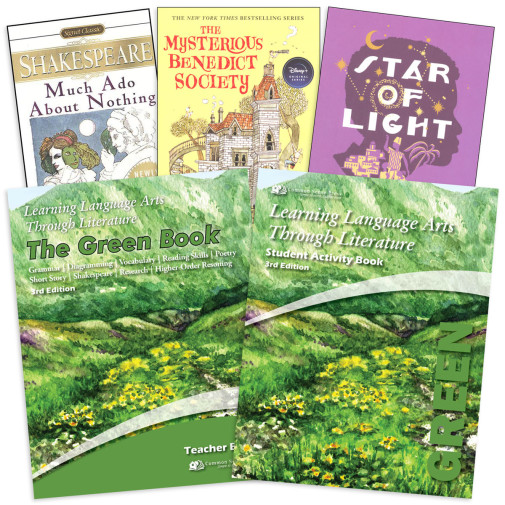We use cookies to make your experience better. To comply with the new e-Privacy directive, we need to ask for your consent to set the cookies. Learn more.
Learning Language Arts Through Literature Complete Package Green
Includes Teacher Book, Student Book and required literature.
For more information on any item click on the link for a full product description.
This package includes the following items:
Covers grammar (parts of speech, punctuation, modifiers, diagramming, participle phrases, possessives, prepositional phrases, sentences, quotations, titles, verb tenses and much more), vocabulary, reading skills (book reports, character development, comedy/tragedy, comprehension, figurative language, historical fiction, metaphors, similes, poetry), spelling skills, penmanship, composition (analogies, bibliography, topic sentences, persuasive writing, outlining, note-taking, theme and much more), poetry, research, and higher order thinking skills. Includes excerpts from literature and the Psalms as well as three full-length book studies. Passages from: Black Beauty, Borrowers, Devil in Print, Around the World in Eighty Days, Eight Cousins, Psalm 1, and Story of the Treasure Seekers.
The three full-length books studied in this level include: Star of Light, The Mysterious Benedict Society, and Much Ado About Nothing. You can purchase these novels as part of the Complete Package with the Teacher and Student books, buy them separately, or source them from a local library.
Changes to the 3rd edition include: The Mysterious Benedict Society has replaced Adam and His Kin book study; several lessons have been replaced and reading comprehension and writing activities have been added to many lessons.
| Product Format: | Product Bundle |
|---|---|
| Grades: | 7-8 |
| Brand: | Rainbow Resource Center |


easy to find and order with good price
coop chose
Material being used by homeschool co op
Been using LLATL since the beginning.